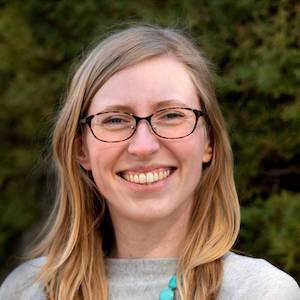Risk communication is a vital element in ensuring that the public has the information they need to make informed decisions about disasters. This is even more the case for vulnerable populations who can be limited in the options and actions available to them.
 Carson MacPherson-Krutsky
Carson MacPherson-Krutsky
Recently, the Natural Hazards Center partnered with the U.S. Army Corps of Engineers (USACE) to create a suite of resources focused on risk communication for socially vulnerable populations. The project includes guidance, exercises, and an annotated bibliography to assist practitioners in applying best practices to every day risk communication.
Now, the Center is excited to announce the next stage of the project and welcome Carson MacPherson-Krutsky to the team. MacPherson-Krutsky, who recently completed a doctorate in Geosciences at Boise State University, will be working to add even more resources to the project. Specifically, she will be developing a six-unit course and a half-day workshop for flood and other hazard risk professionals who wish to enhance their skills in the area of risk communication for vulnerable populations.
“I am very passionate about bringing scientists, practitioners, and community members together to ensure that the science we do has real-world applications,” MacPherson-Krutsky stated. “This project with USACE is a great opportunity to meld my passions for translating technical information, creating educational materials, and motivating action with the goal of reducing future impacts, especially for those most affected by disasters.”
MacPherson-Krutsky will serve as a part-time research associate on the project while still holding a part-time position at Boise State University where she is the co-founder and community engagement coordinator for the Hazard and Climate Resilience Institute.
MacPherson-Krutsky’s research uses social science methods to investigate protective action motivations and assess the efficacy of various risk communication styles. She has worked closely with local emergency managers to develop and test communication materials and is also interested in creating multimedia products that convey complex or technical information in engaging and user-friendly ways.
“We look forward to Carson moving this meaningful collaboration with the USACE forward,” Natural Hazards Center Director Lori Peek stated. “She has a fascinating background in the geosciences and social sciences and has done truly transformative work to ensure that research reaches a much wider public and practitioner audience.”